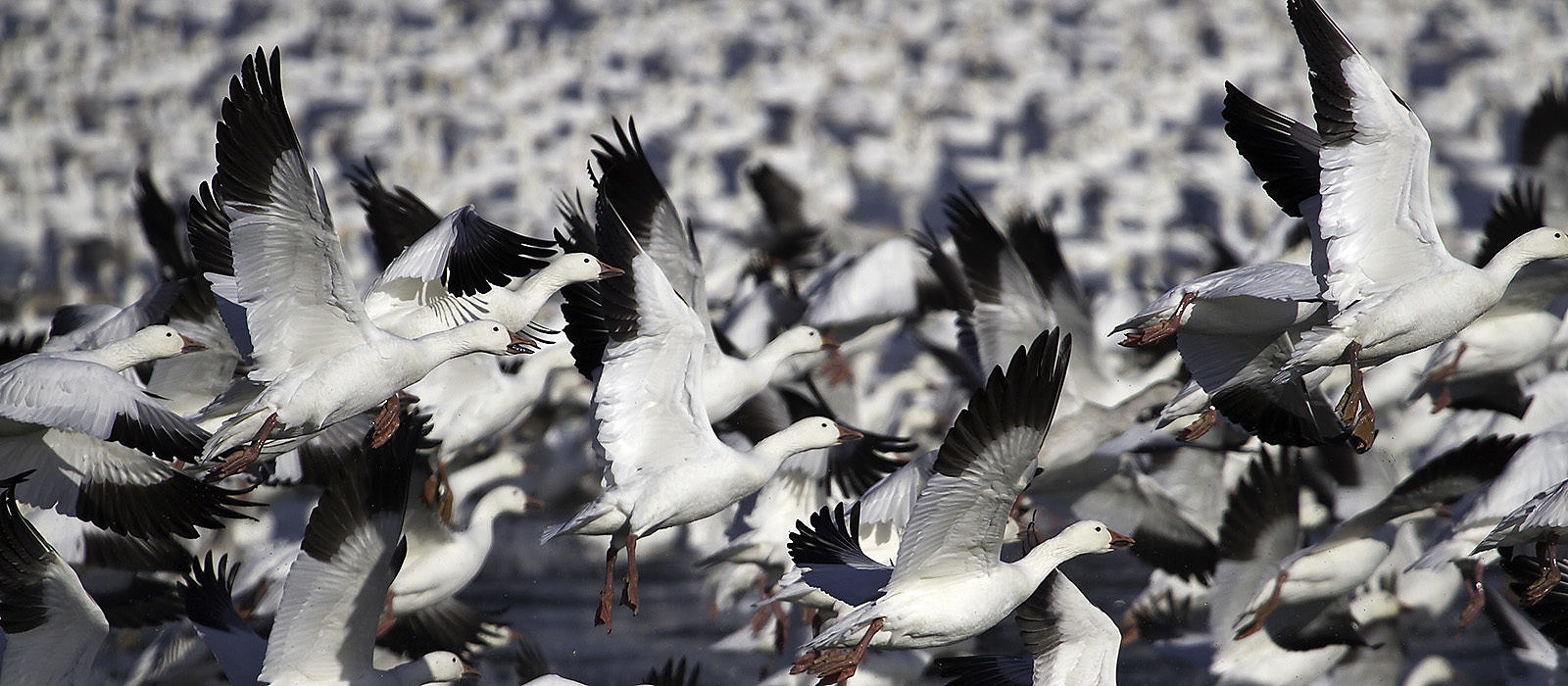
Backgrounder: Where Are the Snow Geese?
The 2022 Update
For more than three decades, as autumn leaves blazed and swirled across Vermont and New York, an annual rite of fall was the Champlain Valley “snowstorm.” Snow Geese in migration, sometimes more than 10,000 in day, filled the skies and covered fields in a honking blanket of geese. But that’s all changed. The blizzard ain’t happening like it used to.
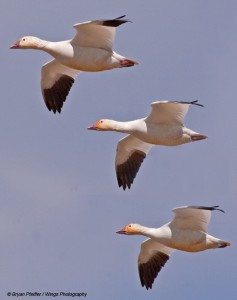 This isn’t to say you won’t find thousands of Snow Geese at Dead Creek Wildlife Management Area in Addison, Vermont, from now into December. But the reliable spectacle of swirling, honking masses of geese is now but a fond memory — at least here in Vermont. But that doesn’t mean you should stay home — you should go see geese. Lots of them now turn up in New York along the Lake Champlain shoreline.
This isn’t to say you won’t find thousands of Snow Geese at Dead Creek Wildlife Management Area in Addison, Vermont, from now into December. But the reliable spectacle of swirling, honking masses of geese is now but a fond memory — at least here in Vermont. But that doesn’t mean you should stay home — you should go see geese. Lots of them now turn up in New York along the Lake Champlain shoreline.
Even as Snow Goose numbers rise at Dead Creek this fall, you may not always see them from the viewing area on Route 17 in Addison. Thousands of geese can be hidden in a dip in the land off to the south. They’re out there — all but invisible. If that’s the case, return to Route 22A, drive about one mile south, then head west on Gage Road to its end. You can sometimes see Snow Geese from there. Otherwise, wait for a Bald Eagle (or low-flying plane) to pass overhead, which sometimes launches the flock. Early mornings at the goose viewing area on Route 17, when geese sometimes fly in for the day, can improve your odds — and be magical.
The Greater Snow Goose population estimate for 2022 stands at 753,000, which is 5 percent higher than the previous estimate in 2019. (There were no estimates in the interim owing to COVID.) Overall, based on what I’m reading from the USFWS, we can expect Snow Goose numbers here in Vermont and New York to peak at several thousand this fall, higher on occasion — in other words, about the same as what we’ve seen in recent years. Even a few thousand geese is an impressive sight. What matters most for birdwatchers is whether the flocks tend to show themselves in Addison or whether they’ll feed and roost far away from the best viewing sites. It can be a crap-shoot.
In any event, the saga of Greater Snow Goose in Vermont is a story of success, too much success, wildlife management, and the predilections of a bird smart enough to discover agriculture.
Some History
First recognize that the Snow Goose (Chen caerulescens) comes in two varieties: Greater Snow Goose (Chen caerulescens atlantica) and Lesser Snow Goose (Chen caerulescens caerulescens). Either one ranks among the most gregarious and spectacular birds of the arctic. Greater Snow Goose, the race we see in the East (along with a few Lessers mixed in) breeds on Bylot, Axel Heiberg, Ellesmere, and Baffin Islands, and in Greenland. It winters almost exclusively along the Atlantic Coast and points inland, from roughly New Jersey to North Carolina. Along its migration, north and south, Greater Snow Goose uses, among other areas, the Champlain Lowlands and the tidal marshes of St. Lawrence River for staging and feeding.
Since at least the early 1980s, Dead Creek Wildlife Management Area in Addison, Vermont, has been a legendary goose viewing spot. The Vermont Fish and Wildlife Department encouraged agriculture practices there that provided food for migrating birds. It also brought thousands of people each fall to a state roadside viewing area along Route 17 near Dead Creek; it was a delightful blend of birders, leaf-peepers and surprised motorists, all gathered for shock-and-awe views of geese numbering in the many thousands.
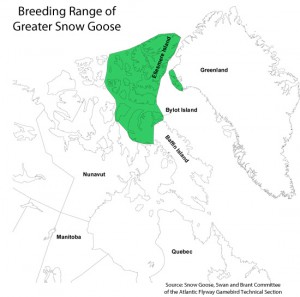 Population Explosion
Population Explosion
The period of the Snow Goose popularity in Vermont coincided with a skyrocketing overall population of Snow Geese. Traditionally, most Greater Snow Geese wintered in federal wildlife refuges of the south-central Atlantic Flyway (Virginia and North Carolina). But since the mid 1980s the population shifted northward, with larger concentrations occurring in Maryland and Delaware, and to a lesser extent New Jersey. One explanation for the shift was that the Snow Goose discovered agriculture. The availability of grain fields in mid-Atlantic states, along with increasing temperatures across the wintering grounds, are believed to have helped more geese survive winter, which contributed to a growing population.
Over the past three decades, the Greater Snow Goose population rose to approximately 1 million birds from roughly 200,000 in 1980, a five-fold increase. And it brought upwards of 20,000 of that population to Addison during its hey-day. We had a blast with them.
Population Controls
But so huge was the population that Snow Geese began to over-run and damage their arctic breeding grounds; they also became a problem for farmers on wintering grounds. So wildlife authorities decided to institute additional hunting and other measures designed to drop the population toward between 500,000 and 750,000 birds. It is a level that wildlife biologists believe “optimizes the balance between a healthy population that can easily recover from catastrophic events and does not negatively impact its natural habitats and associated biodiversity.”
The controls have succeeded. Greater Snow Goose numbers have bounced around 800,000 over the past few years, showing no trend up or down — evidence that the population has stabilized.
Finding Ross’s Goose
Throughout the 1980s and 1990s, the first week of October brought thousands of Snow Geese to Addison. The annual honking sea of white remains among my fondest of avian memories in nearly four decades of birding. But another pastime was finding Ross’s Goose among the ocean of Snows. Ross’s Goose (Chen rossii) is, in the East, a rare visitor. It breeds in the central arctic and along the western shores of Hudson Bay and winters in the southwestern United States. But a few Ross’s Geese would inevitably find their way east with the Greater Snow Geese.
Ross’s Goose looks like a diminutive Snow Goose. The best field marks are its smaller size, stubbier bill (lacking the black “grin patch”) and steeper forehead. The marks should be obvious in the image below (with the Ross’s Goose situated left-center). Ross’s Goose often appears “whiter” than Greater Snow Goose. In situ, pulling out a single Ross’s Goose from among many thousands of Snow Geese was always a challenge; it bestowed bragging rights for those among us who did it readily and routinely.
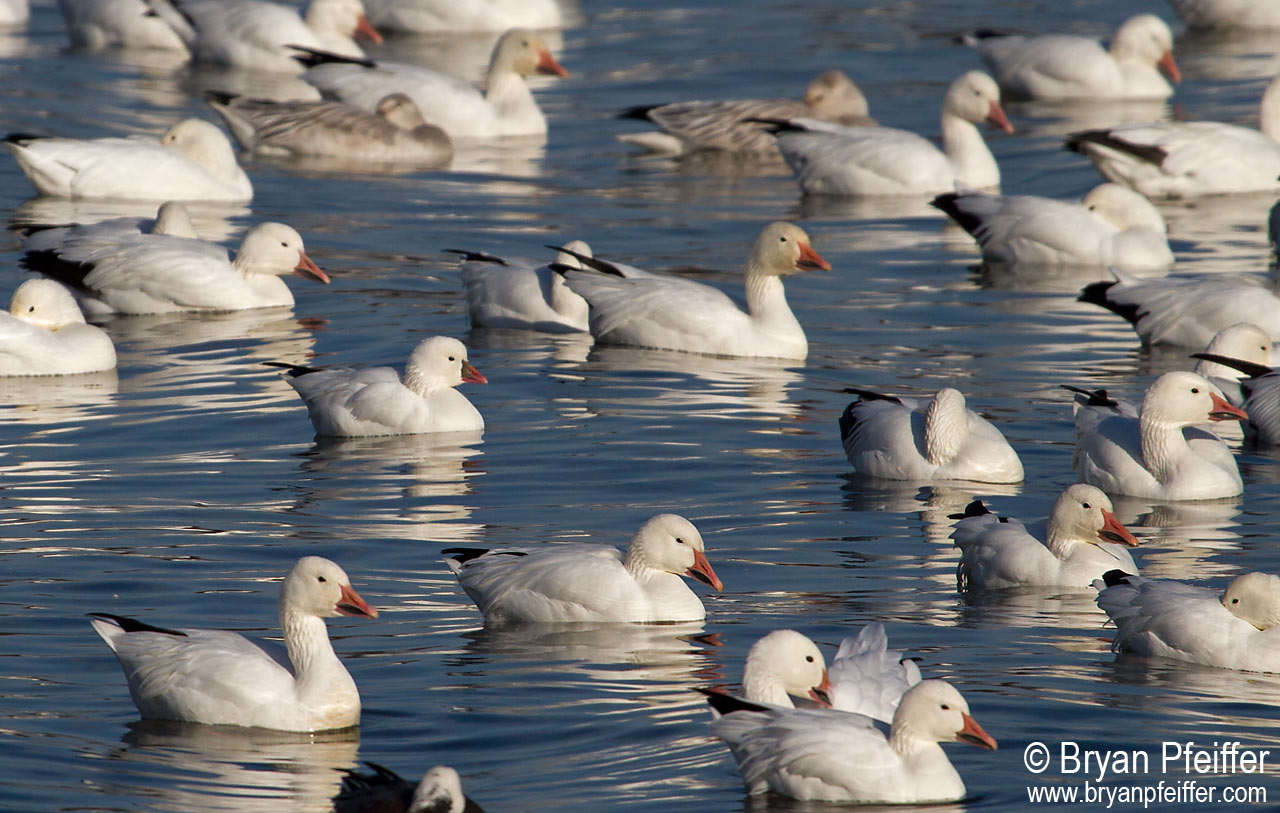
A Ross’s Goose among Greater Snow Geese on Lake Champlain in New York on 16 Nov 2013 / © Bryan Pfeiffer
So Where Are the Snow Geese?
In short, they’re in New York or passing through. Vermont has lost its goose empire to the Empire State. Along with the simple decreasing population, Snow Geese seem to be staging in agricultural fields “across the pond” on the other side of Lake Champlain or along the New York shoreline. “The birds are migrating more through New York, perhaps due to the extensive food that’s available in farm fields over there,” says John Hall, the spokesman for the Vermont Department of Fish and Wildlife. These birds do have wings, after all.
Birders are bearing this out. Enterprising goose-chasers have in recent years been locating large flocks on the New York side of the lake. I’ll try in future posts to keep tabs on locations and even include maps to good sites. Snow Goose numbers could rise to a few thousand this fall. It will be but a wisp compared to the goose shows of the past few decades.
Do visit the Champlain Valley this fall. Even if you don’t find the goose show happening, you may find, among other delights, additional waterfowl species, Rough-legged Hawk, Northern Harrier (below, along with Lesser Snow Geese in flight for good measure), Peregrine Falcon, Bald Eagle, lingering shorebirds and maybe even a few southbound Monarch butterflies. I hope to see you out there.
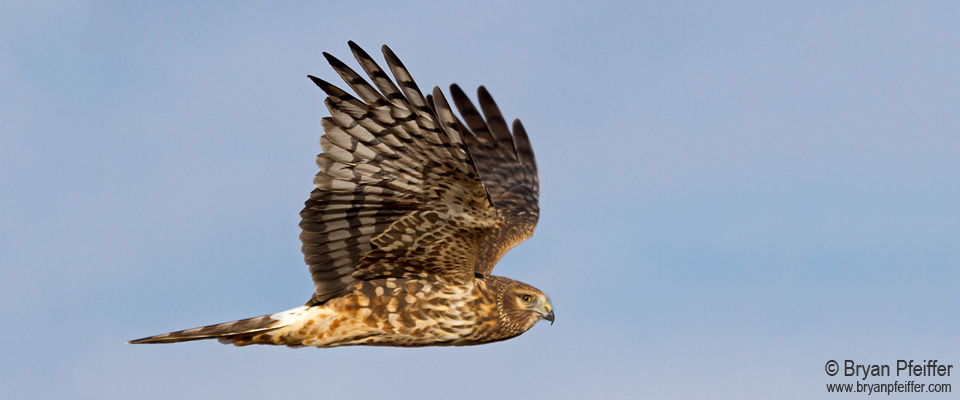
Northern Harrier at Bosque del Apache National Wildlife Refuge in central New Mexico / © Bryan Pfeiffer
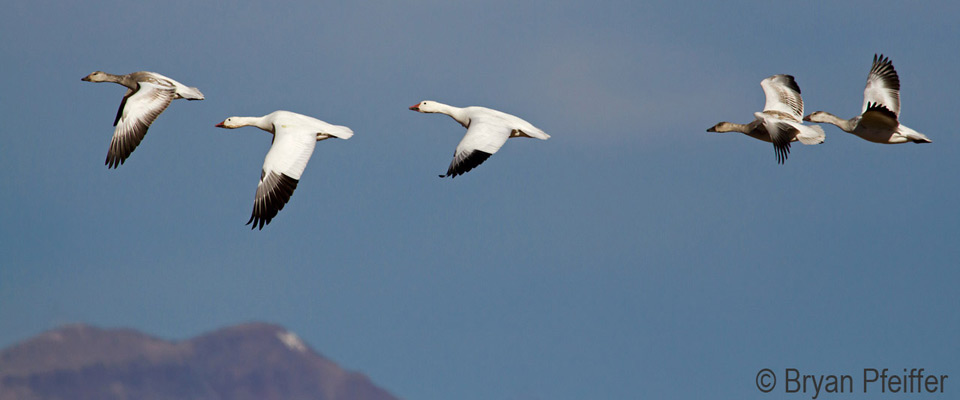
Lesser Snow Geese at Bosque del Apache National Wildlife Refuge in central New Mexico / © Bryan Pfeiffer
Note: Data and insights for this post came from my own observations of these birds over the past 30 years — here in Vermont, on mid-Atlantic wintering grounds, and at Bosque del Apache National Wildlife Refuge in New Mexico — and from the Management Plan for Greater Snow Geese in the Atlantic Flyway, a publication from an alliance of wildlife officials from the United States and Canada.

I’m going to DCWR tomorrow so thanks for the information!
By the way, do you think the geese are coming through later this year?
You’re welcome, Carole. Hit or miss over there at the geese — I hope you hit!
Thank you, Bryan. Beautiful photographs and great information. I hope to see the snow geese soon.
Thank for your intelligent rendering of simple fact, which is so difficult to discern from all the other noise out there.
Is there a better time of day to see the snow geese, morning, afternoon or evening? Thanks, Stu
They should have a farmer plant the field with corn .. The farmer could harvest it and the geese will have some food and possibly return . Dont know if you remember me ? It been a long time since we birded together ! Maybe Higgly beach ,NJ I had the questar .
Thanks Bryan!
I would love to see the great Snow Goose migration! Thank you Bryan.
Great description and good research, Bryan.